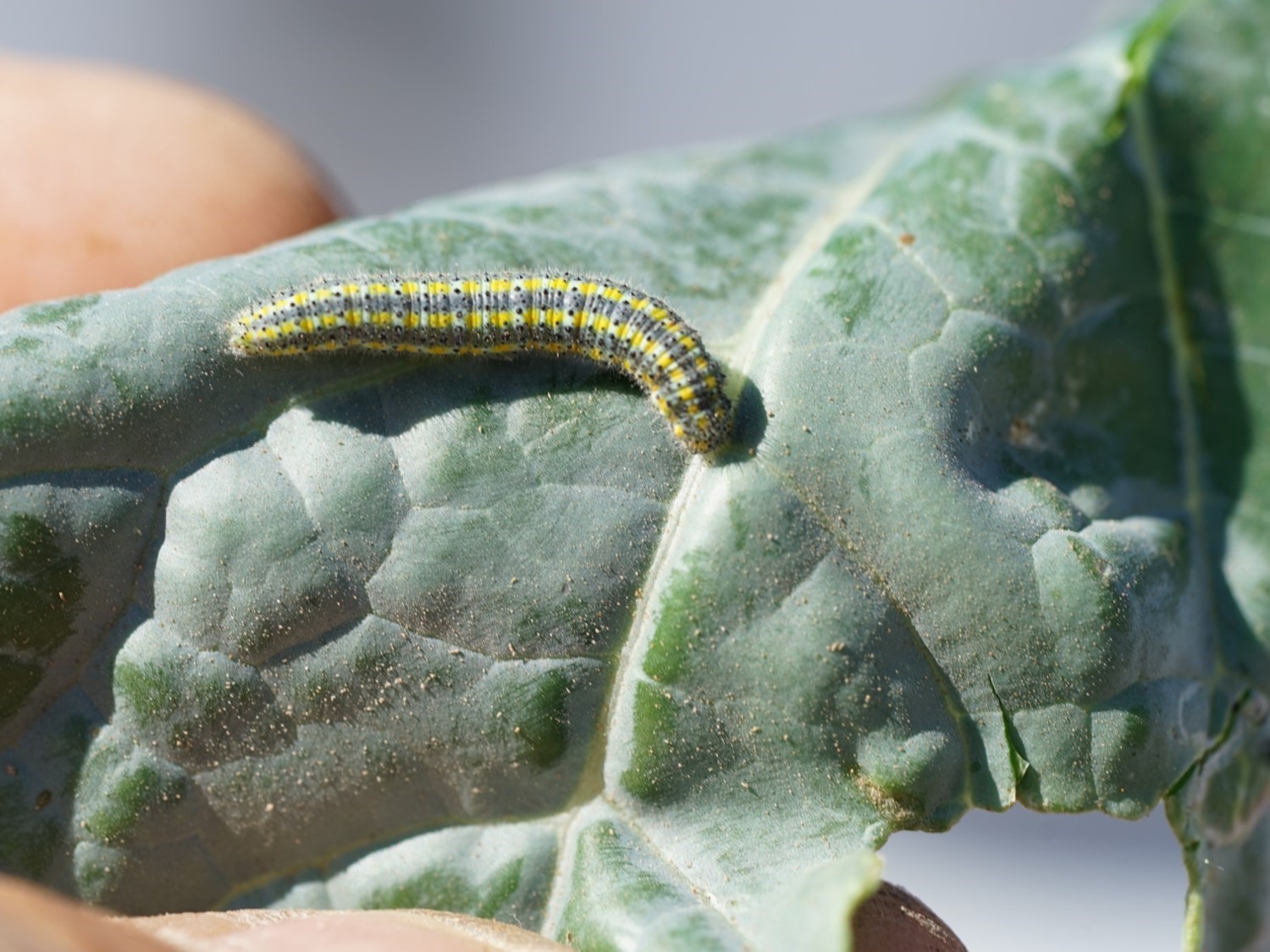
|
|
|
|

|
|||
|
|
|||
What started off as a moderate insect season this fall has turned into one of the heaviest worm seasons on produce crops we’ve experienced in many years. Since mid-September, cabbage looper (CL), beet armyworm (BAW) and diamondback moth (DBM) populations have been consistently abundant in various areas throughout Yuma county. For the most part, CL and BAW have been relatively easy to manage with our standard insecticide products. In some cases, however, spray intervals have been shorter than normal due to overlapping egg lays and warm nighttime temperatures driving development of multiple overlapping generations in fields. Given the warm weather this fall and the abundance of alternate hosts for them to develop on all summer, the presence of these heavy infestations is not unusual. However, what is unusual is the emergence of DBM as a fall pest of cole crops. It’s been my experience, that DBM has become a fall pest within the past 7-8 years. Prior to then, I considered DBM a spring pest, occurring in fields once the weather warmed up. Because DBM attacks only cole crops (Cruciferae), they do not survive in any great abundance during the summer due to the lack of host crops. However, it is not unusual for fall transplanted cole crops to arrive in fields with DBM, regardless of the origin of the transplants. This certainly would explain how DBM populations can become so quickly established in September and October. Under ideal temperatures (~85 °F), DBM can complete a generation in a little over two weeks, as opposed to about 3 weeks necessary for CL and BAW. Thus once established, DBM populations can rapidly build up multiple generations in the field. Management of DBM in cole crops often requires intensive insecticidal management, more so than what is generally required to control BAW and CL. In some growing locations (e.g., Florida or Hawaii), protection of cole crops often requires multiple spray applications, sometimes as often as twice per week to break the DBM cycle. Unfortunately, intensive management can lead to insecticide resistance which DBM has a long history of. I’ve become concerned this fall because I’ve had numerous reports from PCAs who have had difficulty in controlling DBM in transplanted cole crops; transplanted cabbage and cauliflower in particular. In some cases, there have been reports of our standard insecticide products not providing adequate efficacy against DBM. It impossible to explain for sure why this poor field performance has occurred as many operational and biological factors (i.e., application timing and frequency, rates, choice of product, weather and resistance) ultimately determine the level of efficacy. Although resistance is unlikely, we will be collecting and bioassaying a few of these populations just to make sure this is not one of these factors. For the short term though, PCAs should remain diligent in their worm control using the standard products (Radiant, Proclaim, Coragen, Exirel, Intepid) at labeled rates and by ground whenever possible. Also it is important that PCAs practice sound insecticide resistance management (IRM) by rotating modes of action following each application. This is particularly important with the Diamide group of insecticides (IRAC group 28) because these products can be applied as both foliar sprays and soil injections and multiple generations of Lep larvae can potentially be exposed to variable doses of this chemistry. The most effective way to delay the onset of resistance by worms in leafy vegetables is to consider the recommendations provided in the guidelines recently updated entitled Insecticide Resistance Management Guidelines for Lepidopterous Larvae in Lettuce. |
|||
| Back | |||
|
For questions or comments on any of the topics please contact Marco Pena at the Yuma Agricultural Center.
|
|||
|
Home |
Cotton | Veggies |
Forages | Grains
| Citrus |
Crop x Crop Insects | Diseases| Weeds | Pesticides | Economics | News | Weather | Research | Photos | Contacts | General Info. Copyright © 2001 University of Arizona, College of Agriculture and Life Sciences Webmaster: Al Fournier (acis@ag.arizona.edu) |
|||

